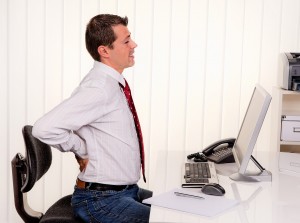
Have you experienced low back pain and then months or years later felt a similar pain in your neck? You may or may not have noticed how low back pain and neck pain are correlated. You may have simply picked up your child or a box off the ground and suffered a low back spasm. Or, you may have turned your neck one day and the same thing happened. You may not have given much thought to how low back pain and neck pain relate to each other. Well, they aren’t separate, there is only one spine. 
Back pain is the worst and costs thousands of dollars in lost revenue. About 80% of people will suffer from it at least once in their lives. The hours lost from work, going to doctors and not being able to play with your kids is disheartening.
People spend more time sitting at desks for their jobs or at school than ever before. Walking is not part of the American lifestyle as it is in Europe where back pain isn’t seen as quite as much. Our bodies are meant for movement not for sitting a lot.
Compression of the discs, joints and connective tissues is often the cause of back and neck pain. Compression from sitting too often, or walking against your gravity line. Scoliosis from lifting incorrectly, playing an instrument on one side vs the other or a sport. Scoliosis can be fixed with specific exercises that can be done at home.
“There is an approximately 72% injury correlation within five years of injuring either the neck or lumbar pelvic region.” Meaning that if you injure the neck region within 5 years it is highly likely that you will injure the low back as well if you do not strengthen it properly. Also, according to fitness expert Paul Chek, “Any trauma to the neck or spine causes a neurological impairment to the shoulder-arm complex.” There are nerves that run the length of the spine which also serve the muscles so, you can imagine now that if you feel pain in one area it may stem from another. “The cervical plexus innervates C1, C2, C3, and C4 which also serve Upper trapezius, SCM, Omohyoid, Levator Scapulae (C4/5), Rhomboids (C4). Levator Scapulae and rhomboids are also fed by the brachial plexus which innervates remaining shoulder musculature (C5, C6, C7, C8, T1 and T2). Any trauma to theneck or spine causes a neurological impairment to the shoulder-arm complex.” This is how back pain and neck pain are related. Also, if you are feeling pain in your elbow or shoulder it could be coming from tight Levators or even Rhomboids but not at the exact point you may be feeling the pain. Be sure to get a qualified health practitioner to assess you properly and give you the appropriate exercises or stretches.
Remember, the body moves together as a unit, the neck and low back are related and, it’s important to strengthen the entire musculoskeletal system not just in isolated movements unless, it’s short term rehab with a focus on one area vs the others. Just keep in mind that if you have a neck disc issue it is highly likely that you will end up with a lumbar problem within 5 years if not corrected properly and the entire body strengthened in its’ natural functional way especially, if you have a desk job where you sit all day in front of a computer, this leads to rounded shoulders, neck pain, forward head posture, tight hamstrings, weak hip flexors and, a flat back. I know I say it often but it’s true….the body is meant for movement.
If you’re not sure how to get started or have had a bad injury then hire an experienced personal trainer to do a proper assessment and create a custom program for you. Walking and hiking are also a great ways to stay active if you don’t care for gyms or indoor classes. Whatever you decide just remember that to stay active creates a youthful energy and is one great way to stay young whatever your age.